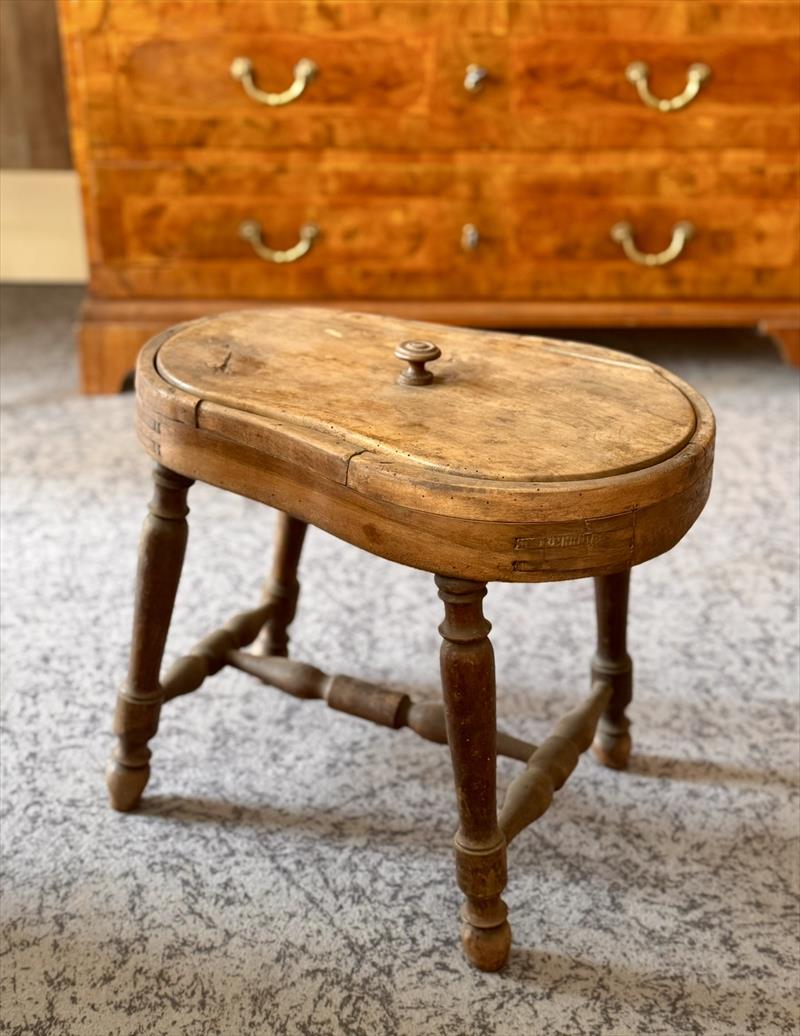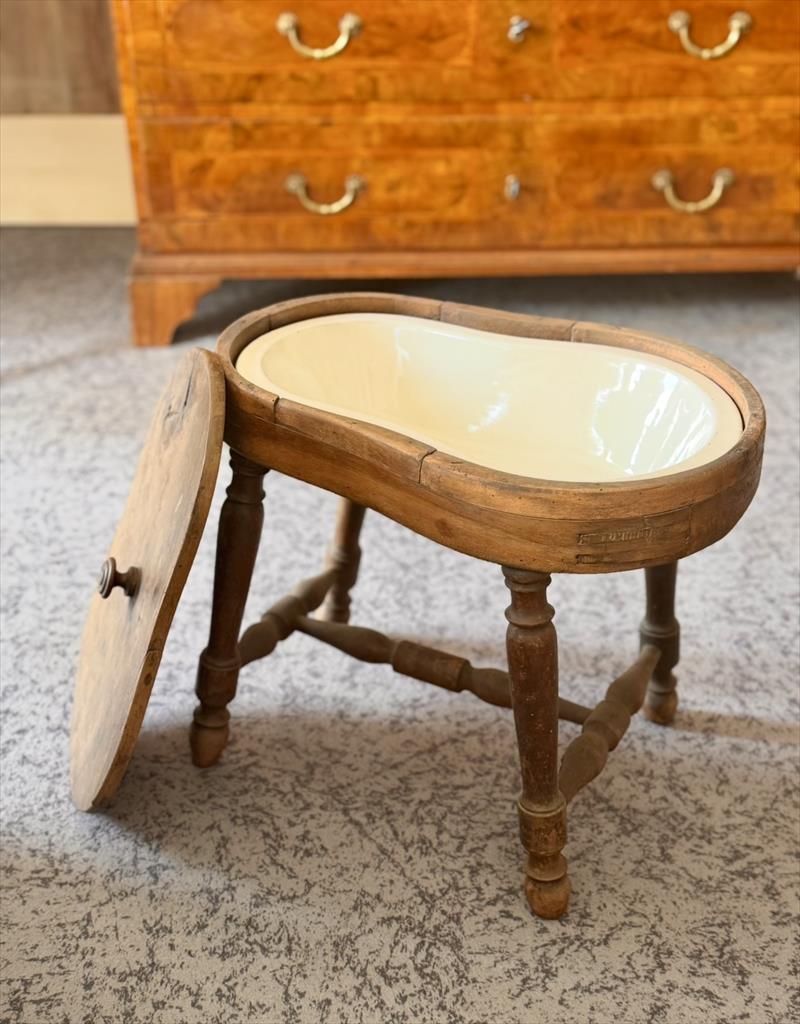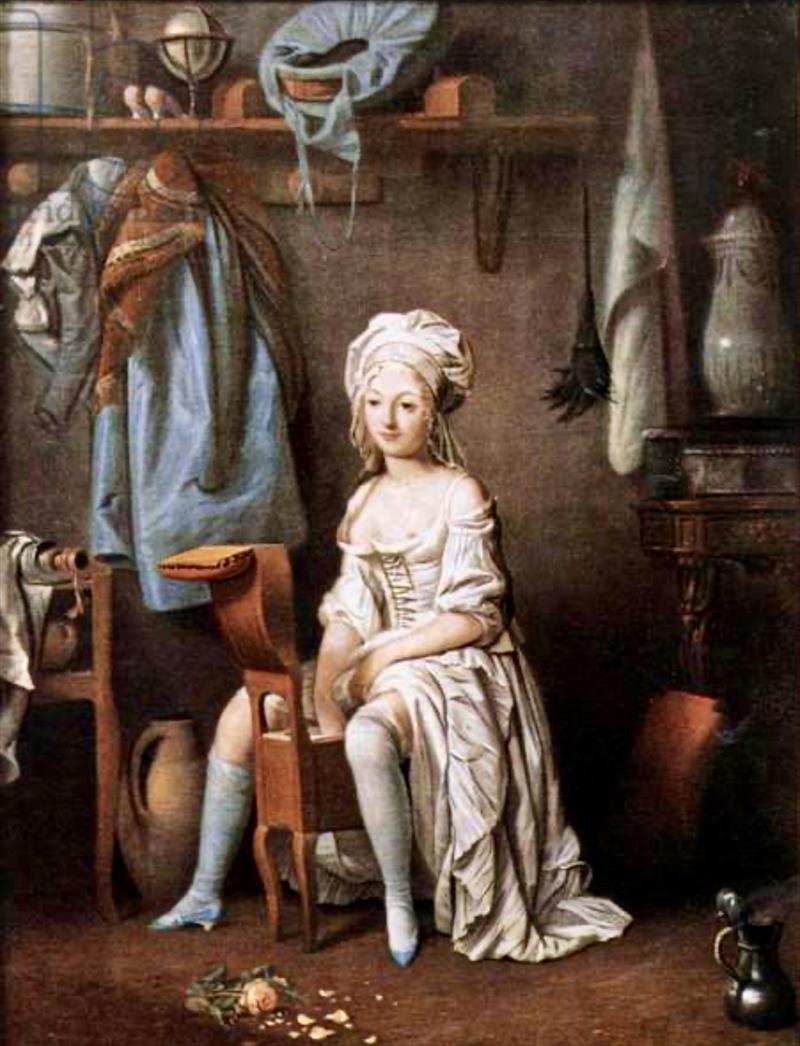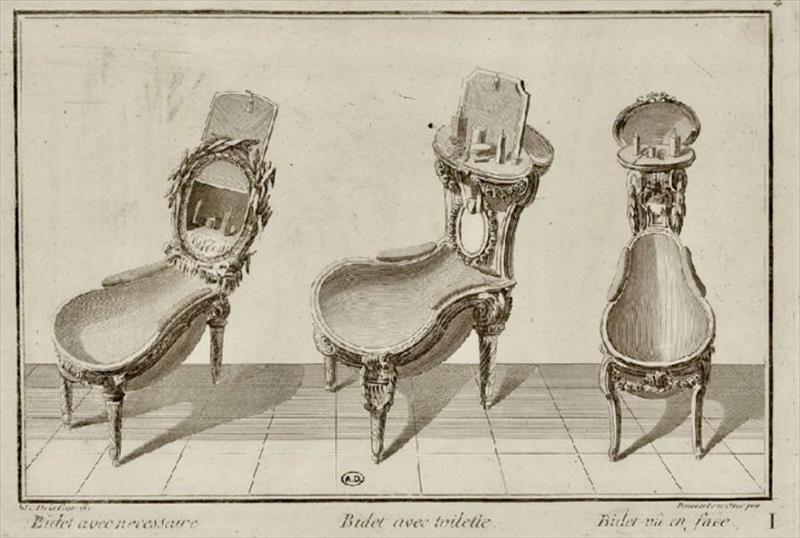The 19th-Century Bidet – A Modest Throne of Private Hygiene
At first glance, it looks like an elegant stool, with smooth curves and turned legs in solid walnut. But lifting the small knobbed lid reveals a refined glazed ceramic basin, discreetly set into the wooden structure like a hidden secret.
This is a bedroom bidet — an authentic mid-19th-century piece, created to meet a need as simple as it is universal: daily cleanliness.
Its compact, violin-shaped form tells a long story. The bidet was invented in early 18th-century France by Christophe Des Rosiers, and the first known model was crafted for Madame de Prie, wife of the French Prime Minister. The word bidet comes from the French term for a small saddle horse, a reference to the straddling posture adopted when using it.
Yet, as often happens, the invention found its true home elsewhere. It was in Italy, specifically in the Kingdom of Naples, that this peculiar object took root. Maria Carolina of Habsburg-Lorraine, an enlightened queen and sister to Marie Antoinette, had one installed in her private bathroom at the Royal Palace of Caserta.
A symbolic gesture, but a decisive one: from there, the bidet began to spread throughout aristocratic residences — and, much more slowly, into the homes of ordinary people.
This 19th-century example is a tangible witness to that story: built to be used with grace and dignity, it embodies the bourgeois ideal of hygiene — discreet yet essential, intimate yet refined.
Its materials — walnut wood and glazed ceramic — reflect a time when even the most modest household objects were crafted to last and to please the eye.
This is not merely a curious piece of furniture: it is the symbol of a silent revolution, one that began in Southern Italy and moved forward against prejudice and convention, asserting a new principle of modernity.
Today, centuries later, this little object reminds us that the very concept of civilization also passes through the body, through care, and through water — and that Italy, once again, had the foresight to embrace and elevate a simple idea, turning it into culture.
- Material: solid walnut
- Size: Cm 45 x 30 x 45 (h)
- Condition: Tobe restored
- Period: Mid-19th century
- Style: Louis Philippe
- State: Good conditions





